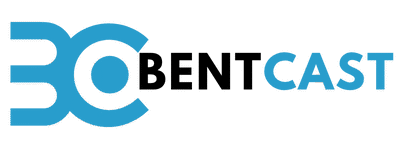The coming year will test the resilience and adaptability of businesses more than any period in recent memory. Markets are shifting under the pressure of global inflation, supply chain realignments, changing consumer priorities, and rapid technological disruption. While these forces present undeniable challenges, they also open opportunities for those who understand how to move decisively.
This roadmap outlines the practical steps leaders can take to expand their organizations sustainably in 2025, balancing calculated risk with forward-thinking innovation.
1. Redefining Your Value Proposition
A crowded market makes clarity essential. Your customers are bombarded with choices, yet they will gravitate toward brands that speak directly to their needs and aspirations. This year, leaders must re-examine their value proposition with brutal honesty:
-
Who exactly are you serving? Avoid the temptation to target “everyone.” Narrow your focus to high-value segments that truly benefit from your offering.
-
What unique pain point do you solve? If your answer resembles a competitor’s pitch, you have work to do.
-
Why should they trust you now? In uncertain times, trust can outweigh even price in the decision-making process.
A refined, customer-centric value proposition forms the foundation for every growth initiative to follow.
2. Leveraging Technology Without Losing the Human Touch
The rush to digitize is not slowing down. Cloud infrastructure, automation tools, and advanced analytics are reshaping operations across industries. Yet, excessive reliance on technology risks stripping away the personal elements that foster loyalty.
A balanced approach is key:
-
Use predictive analytics to anticipate demand shifts, but pair forecasts with on-the-ground insights from your sales teams.
-
Adopt automation to handle repetitive tasks, freeing employees to focus on strategic, creative, or relationship-driven work.
-
Integrate customer experience platforms that give a unified view of every interaction, enabling personalization without crossing privacy boundaries.
This year’s winners will be those who treat technology as an enhancer, not a replacement, for authentic human engagement.
3. Building Flexible Supply Chains
The disruptions of recent years have exposed the fragility of global supply networks. A single unforeseen event can stall production for weeks. In response, leading businesses are moving toward regional diversification and flexible sourcing:
-
Develop relationships with multiple suppliers in different regions to reduce dependency on any single channel.
-
Invest in real-time tracking systems that provide visibility from raw material acquisition to delivery.
-
Keep strategic inventory reserves for critical components to buffer against temporary shortages.
While building redundancy can raise short-term costs, it reduces the risk of catastrophic disruption — an investment in stability.
4. Capitalizing on Shifting Consumer Behavior
The modern buyer is more informed, more selective, and more socially conscious than ever before. Businesses that can interpret and act on these shifts have an edge:
-
Sustainability and ethics are no longer optional for many consumers. Transparent sourcing, environmentally friendly operations, and fair labor practices can strengthen your brand.
-
Hybrid consumption models — mixing online and in-store experiences — are becoming the norm. Offering seamless transitions between channels can boost retention.
-
Subscription and membership models create predictable revenue streams, provided they deliver ongoing value.
Anticipating behavioral shifts means not only watching trends but also actively listening to customer feedback and adjusting quickly.
5. Financial Discipline with Strategic Boldness
Growth demands investment, but reckless spending can sink even promising ventures. The right approach is a blend of fiscal prudence and calculated risk-taking:
-
Keep operating expenses lean by regularly reviewing vendor contracts, renegotiating terms, and cutting underperforming projects.
-
Maintain strong cash reserves to seize opportunities when competitors are forced to retreat.
-
When taking on debt, ensure repayment timelines align with realistic revenue projections, not overly optimistic forecasts.
This disciplined approach allows you to pursue ambitious moves — such as acquisitions or new product launches — from a position of strength.
6. Nurturing Talent for Long-Term Success
In 2025, talent retention may prove more critical than talent acquisition. Skilled employees are a finite resource, and their loyalty hinges on more than salary:
-
Provide continuous learning opportunities to keep skills sharp in an evolving market.
-
Foster a culture of recognition where contributions are acknowledged promptly and meaningfully.
-
Offer flexible work arrangements that balance organizational needs with individual well-being.
The organizations that keep their best people engaged will outperform those constantly scrambling to fill vacancies.
7. Strategic Partnerships and Collaborations
Partnerships are often faster and more cost-effective than building capabilities from scratch. Whether through joint ventures, co-marketing campaigns, or strategic alliances, businesses can expand reach and capabilities while sharing risk.
-
Identify partners whose strengths complement your weaknesses.
-
Ensure that cultural alignment exists, not just financial synergy.
-
Define clear success metrics and governance structures from the start.
Partnerships should accelerate growth, not create distractions or conflicts.
8. Scenario Planning for Uncertainty
If the past few years have proven anything, it’s that predictability is a luxury. Scenario planning helps you prepare for multiple futures rather than relying on a single forecast:
-
Develop best-case, worst-case, and moderate scenarios for revenue, costs, and market conditions.
-
Assign specific action plans to each scenario, so your team isn’t improvising under pressure.
-
Review and update scenarios quarterly as new data emerges.
Preparedness doesn’t guarantee immunity from shocks, but it reduces reaction time and mitigates losses.
9. Brand Positioning Through Storytelling
Facts and figures inform decisions, but stories inspire action. Businesses with compelling narratives stand out in saturated markets:
-
Share authentic accounts of how your product or service has changed lives.
-
Highlight the journey — not just the end result — to humanize your brand.
-
Align your storytelling with core values, ensuring consistency across all channels.
A strong narrative builds emotional connection, which in turn drives customer loyalty and advocacy.
10. Measuring What Matters
Growth efforts often fail because organizations track the wrong metrics. Vanity numbers — such as social media likes or website visits — may feel gratifying but reveal little about actual performance.
-
Focus on customer lifetime value, net promoter score, and conversion rates as core indicators.
-
Tie every initiative to measurable business outcomes, not just activity levels.
-
Use dashboards that provide real-time access to the data decision-makers need.
By measuring the right things, you can quickly double down on what works and pivot away from what doesn’t.
Conclusion
The business landscape in 2025 will reward agility, foresight, and a willingness to adapt. Growth will not come from chasing every opportunity but from deliberately choosing the right ones and executing with precision.
The most resilient organizations will be those that balance technology with human touch, embrace flexibility without sacrificing focus, and invest boldly while safeguarding stability.
In short, sustainable growth is not about doing more — it’s about doing what matters most, better than anyone else.




